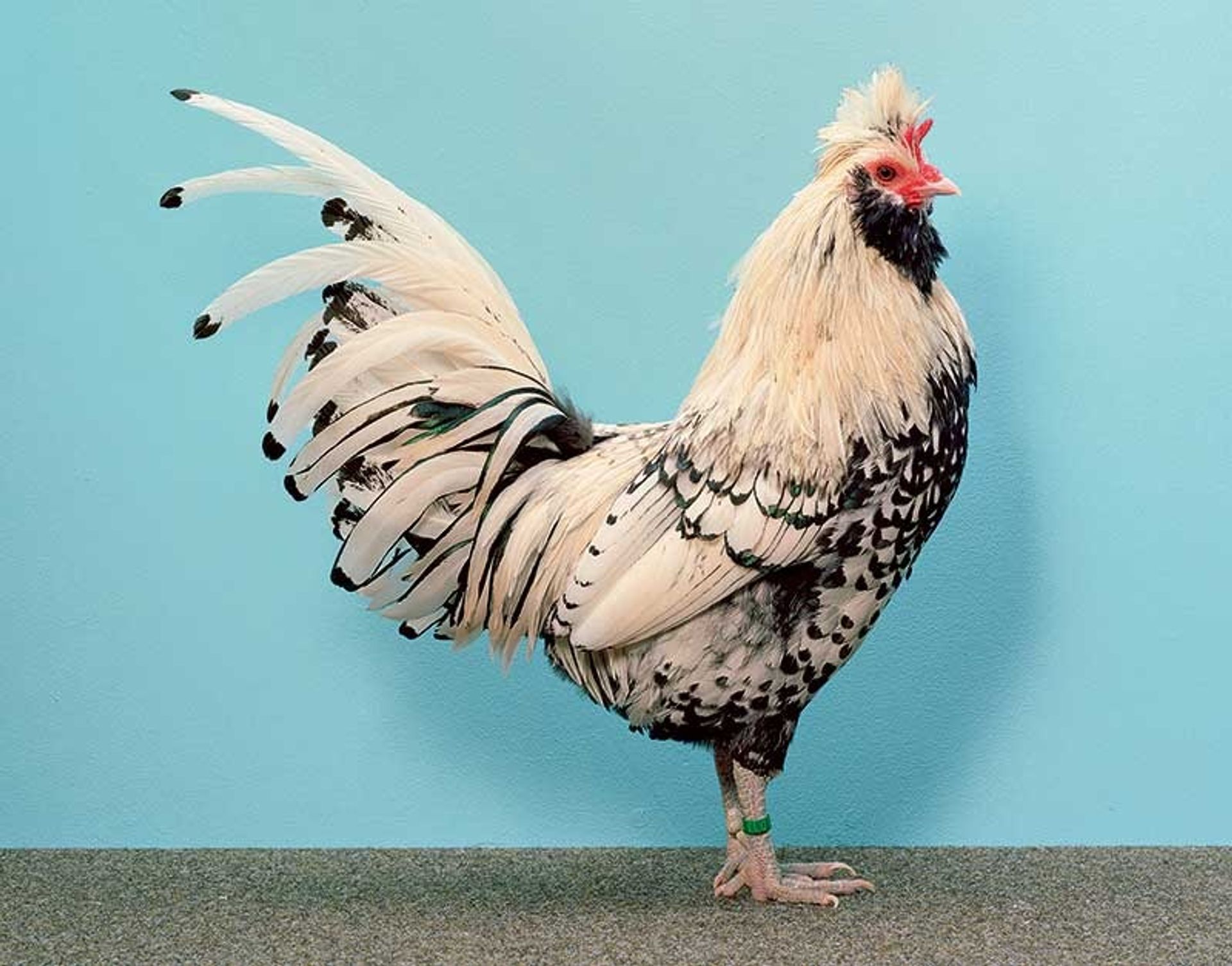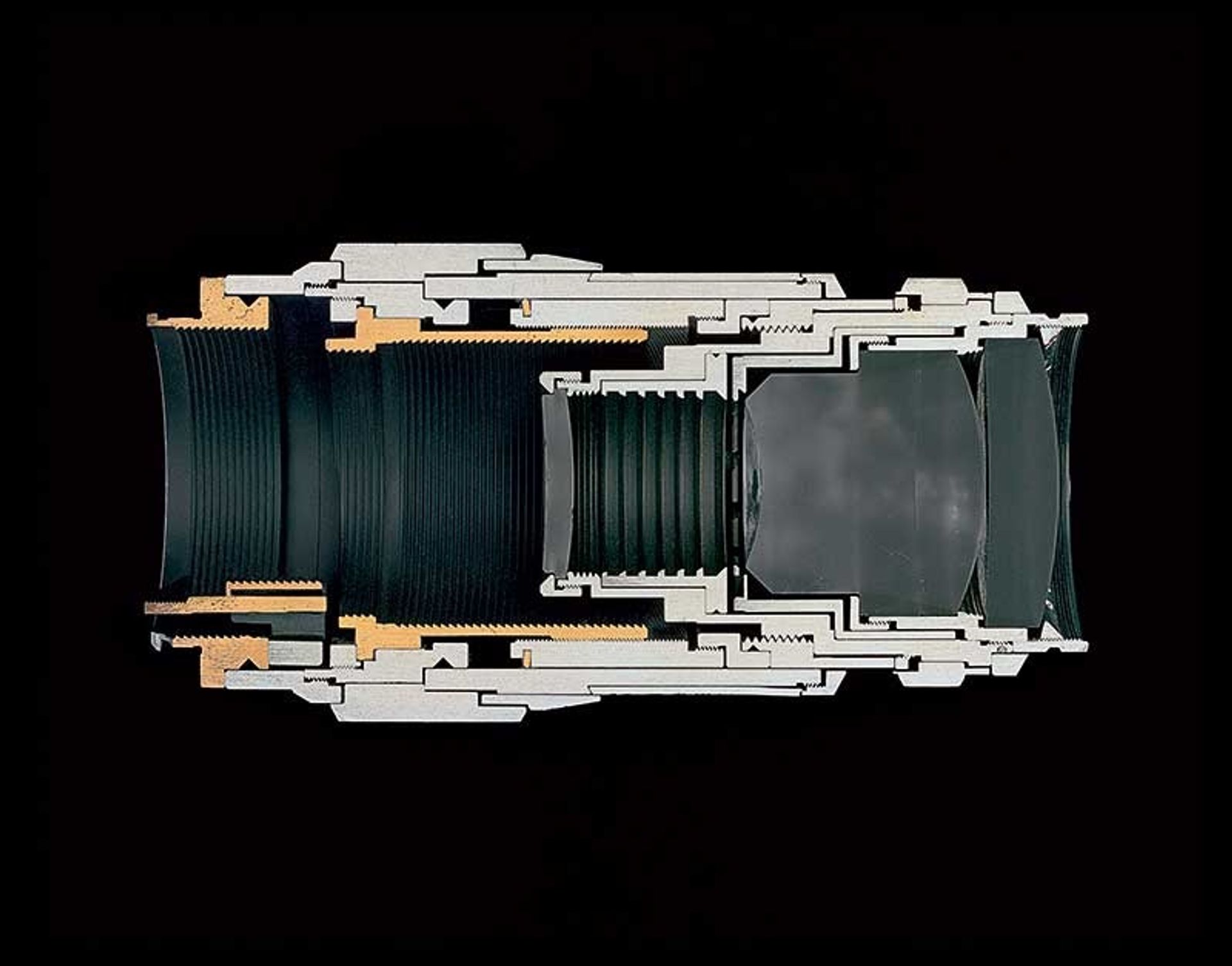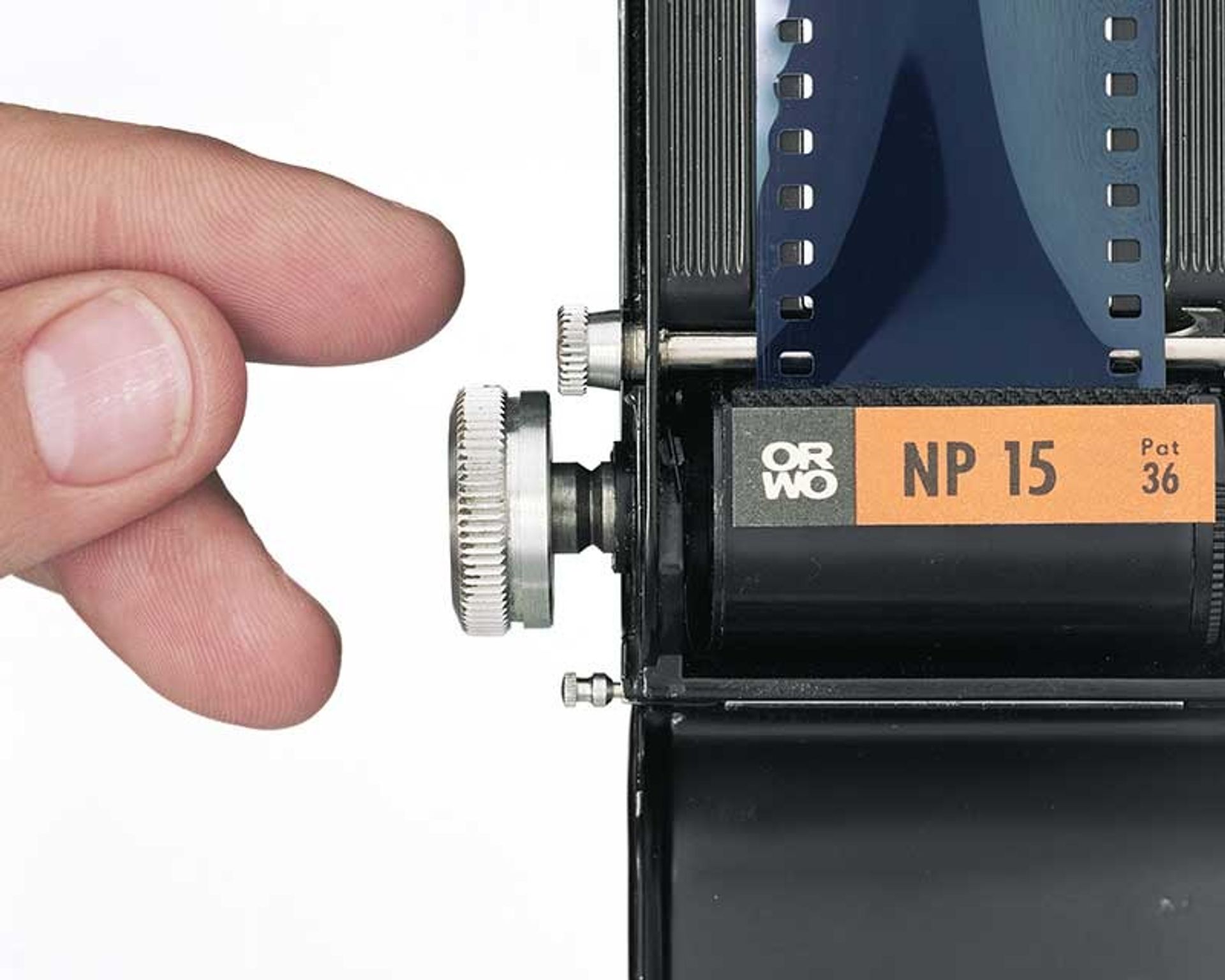The reception and shop area had both been interfered with: Fujifilm-green bands of wallpaper ran from floor-to-ceiling, partly pasted over doors and signage. One dissected the donations box sign, leaving only “ate Today” visible. The shop’s large glass cabinet was also dissected and filled with catalogues. There are two for this exhibition: the main one shares the title of the show (Christopher Williams: The Production Line of Happiness, Whitechapel Gallery, 29 April-21 June), retails at £24.99 and, according to its own introduction, is “very much part of the exhibition”. The second catalogue, titled Printed in Germany, contains only images interspersed by stacks of blank green pages, bulking it up into a hefty tome priced at £58. Still in the shop, a framed print for sale (edition of 10, £2,950, sold out) is a larger, green-edged reproduction of the cockerel photograph that is in the show.
So why was I not in the exhibition yet? Because the shop is where the most interesting elements of the show were. Without the catalogue, the press release, or the programme picked up beyond the first gallery, the show is just a selection of well-made, vividly coloured stock photographs.

Williams is not particularly well known in the UK and this exhibition is not a particularly welcoming one. He is notorious for the extremely long titles that he gives his works. These can easily top 40 lines and detail the specifics of each work to an excruciating degree. An example:
K-Line Matt Dulling Spray CFC Free Applications - Photographic - Motion Picture - TV Studio Removes Glaring Highlights from Polished Surfaces in Camera Work. Coats evenly with a very fine spray pattern – it effectively dulls any polished object to be photographed. Directions Shake the can well, and whilst spraying, hold not more than 30 cm (12 inches) from the object. The spray sets in about 2 minutes, and further coats may be added if necessary. It wipes off easily with a soft cloth and all smears can be removed with a little spirit. K-Line spray is safe with most materials, but a test should be made on a scrap surface if in doubt, especially with some types of plastics. Caution Pressurised container. Protect from sunlight and do not expose to temperatures exceeding 50º C. Do not pierce or burn even after use. Do not spray on a naked flame or any incandescent material. Keep away from sources of ignition – No Smoking. Keep out of reach of children. Do not breath spray. Avoid contact with eyes. Use only in ventilated areas. Store at a minimum of 20º C UN 1950 Extremely Flammable 2827 S W Kenyon Cranbrook – Kent U.K. Division of K-Line Photographic Supplies Company Telephone: 01580 850770 Made in Britain Registered in the US Patent and Trademark Office Studio Rhein Verlag, Düsseldorf August 24, 2014 (2014)

They can be informative and reveal references not easily identifiable through the photographs alone, but most of the time, they are pedant poems to uninteresting technicalities.
The first encounter upon entering was with a dirty white temporary wall divided by green wallpaper. All the walls were left as though halfway through installation, with pencil marks, bits of tape, holes and instructions for works that were once hung there. Labels from the previous exhibition have also been left—tombstones that provide a lyrical reminder of what is no longer here.
“Welcome to the Production line of Happiness” said the invigilator as he handed over a map that listed numerically, then alphabetically, elements that made up the exhibition, from “adhesive” to “Zimra Guerts [sic]”. (Geurts is a soft-core porn model who features topless in a black and white picture, holding her breasts as she laughs in a moment of seeming candour between, presumably, racier shots.)
Most of Williams’s images, save for a handful (the majestic cockerel against its blue background; the black and white portraits of a smiling Mustafa Kinte, a Gambian immigrant, holding a camera; and those of Geurts) are so highly polished and bland that they are easily passed by. They are also recognisable: if you have any passing notion of Williams’s work, you would have seen these already. They look better online and in magazines—the ideal location for the type of image that these so meticulously mimic.

And here is the crux: if they were interesting enough for a closer look, you might notice that they are not quite what they seem. Look (very) closely and you see blemishes and marks that would ordinarily be removed if these were actual stock images used for commercial purposes. Look closely at the four black-and-white photographs of suited men outside a white wooden house and suddenly that profile looks familiar: it belongs to John F. Kennedy.
Despite the glossiness and bright vivid colours (even the shiny black of the monochrome photos) the exhibition was essentially quite boring without the explanations. The irony is that the texts, the blurbs and titles are also long and mostly dull. For the occasional insight into Williams’s work, you have to wade through pages of old footnotes, speeches, supplements, press releases, dirges and cringe-worthy essays that clarify little and do Williams no favours except maybe a little ego massaging (sample quote: Christopher Williams is a “cinephilic artists with a Brechtian flair for quotation”). But the volume of tiresome ephemera you have to plough through to access the references in the glossy photos means that the Production Line of Happiness churns out only fleeting joy.
José da Silva is the researcher and digital producer at The Art Newspaper.
Christopher Williams: The Production Line of Happiness, Whitechapel Gallery, London, 29 April-21 June

